Discover how the D-RK Simulator Software for studying rotary kilns can be one of the most important for your industry!
Among the numerous tools that Dynamis uses in its projects, perhaps the most important is its D-RK Simulator software, a simulation software developed by Dynamis for process analysis in rotary kilns.
The D-RK Simulator performs temperature profile analysis of the kiln shell, refractory, furnace bed material, heat transfer, analysis of the type of reaction being a drying, calcining, sintering etc., indicating the complete chemical reactions and the formation/decomposition of each material of the product bed, exposing exactly what happens inside the rotary kiln and along its entire length, i.e., opening a black box and presenting your process in detail for better understanding.
Our D-RK Simulator software is also used in conjunction with other software such as our mass and energy balance software to make a global analysis, our CFD study software which in addition to being used to analyze the gas flow inside the kiln. In addition, it can also analyze a previous drying or preheater tower, and all this data gives us inputs for our D-RK software. Through iterations of the simulations with these two tools working together, it is possible to evaluate how materials and gases respond inside the rotary kiln, or cooler, in a very similar to reality.
STUDY OF PYROPROCESSING MODELING
DYNAMIS has a long experience in pyroprocess simulation in rotary kilns. The technical study developed by DYNAMIS combines physical phenomena like mass transfer (in drying and calcination, for example) and heat transmission (radiation, convection, and conduction) with chemical reactions (combustion, calcination and clinkerization).
DYNAMIS approaches this type of process study by dividing it into different parts. As these steps are interdependent, DYNAMIS needs to go through several iterations to achieve the final solution.
- Part 1 – Global: the main goal of the global analysis is to verify the coherence of operational parameters that arise of each volume of control (Preheater, Rotary Kiln and Cooler). The global verification is carried out using our in-house
mass and energy balance software, a software developed by the DYNAMIS’ technical team.
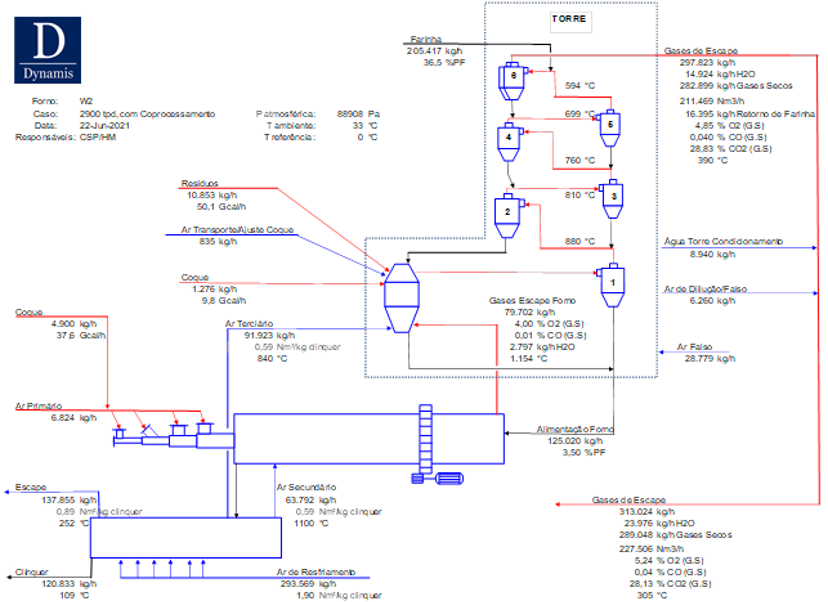
- Part 2 – Preheater: this part of the study focuses on the burnout of the fuel injected into the calciner, the heat exchanged between gases and material throughout the preheater and the calcination reaction that the raw meal suffers along the preheater. For this step, DYNAMIS uses the CFD software focused in the calciner.
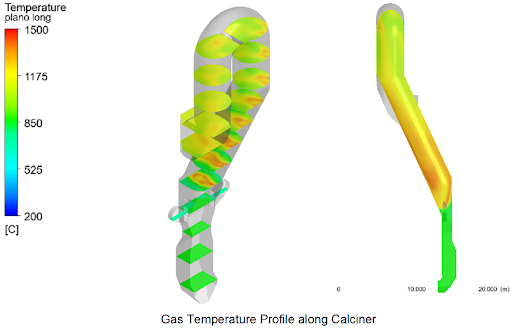
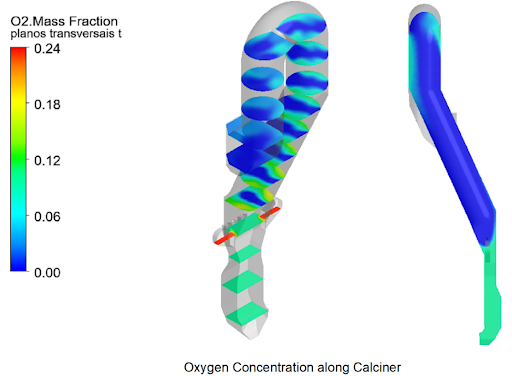
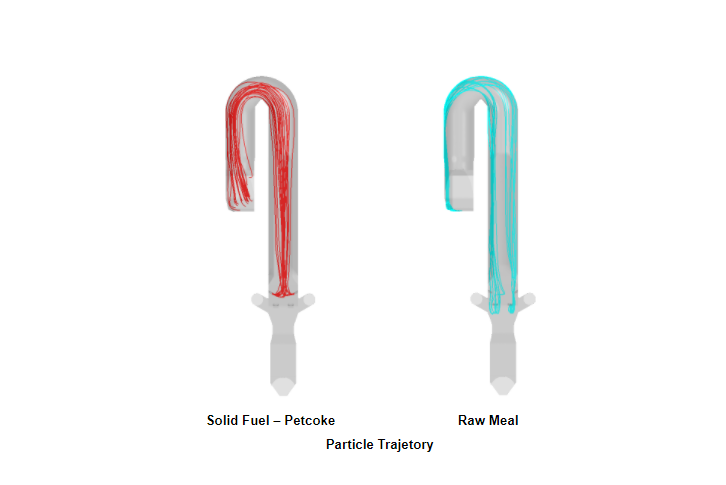
- Part 3 – Rotary Kiln – Combustion: the main result of this part of the study is the fuel burnout (the flame length and its thermal profile). The presence of the flame significantly increases the heat exchange in the region, having a great impact on the thermal profile of the material. For this step, DYNAMIS uses the CFD software and simulates the flame inside the kiln using the material thermal profile obtained with the D-RK Simulator.
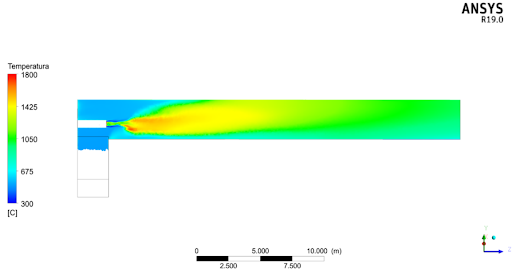
- 4 – Rotary Kiln – Material Bed: This part of the study deals with the mass and energy balance and chemical reactions that the material undergoes throughout the kiln. The main result of this stage of the study is the thermal profile of the gases and the temperature profile of the material bed. For this study, DYNAMIS uses in-house development software called D-RK Simulator. To obtain the desired temperature profiles (of gases and material), the program uses the fuel burnout obtained in the CFD simulations.
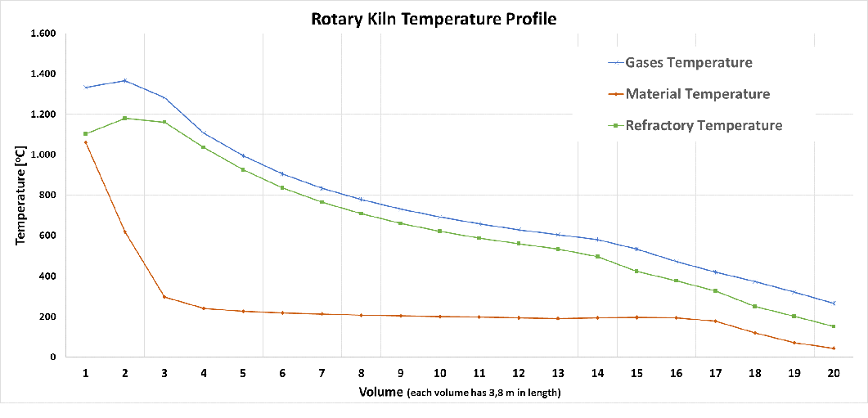
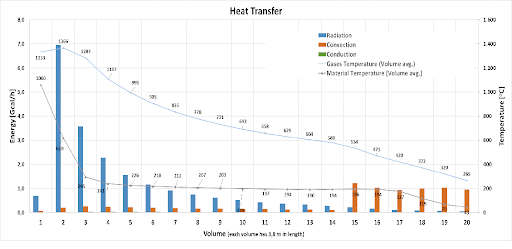
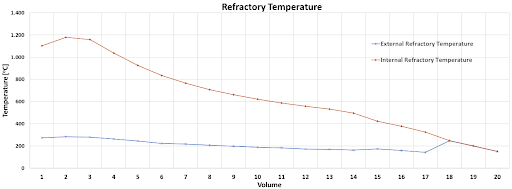
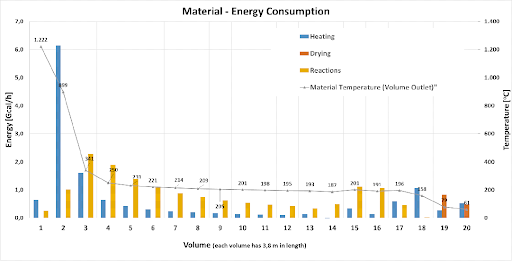
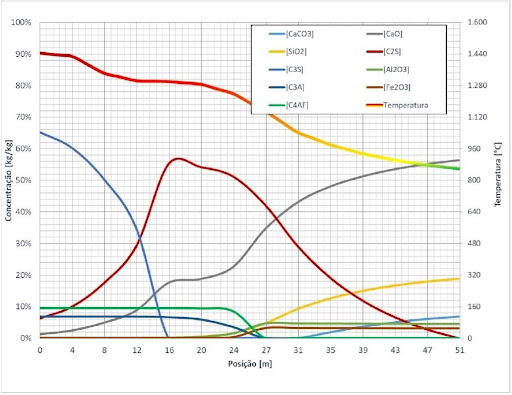
- Part 5 – Cooler: In addition to rotary kiln simulations, DYNAMIS also simulates the operation of the grate cooler. Using its own in-house developed software called the D-GCooler Simulator, DYNAMIS studies the phenomena of flow (air flow) and heat exchange (between the cooling air and the material) in a fixed bed of granular material (clinker).
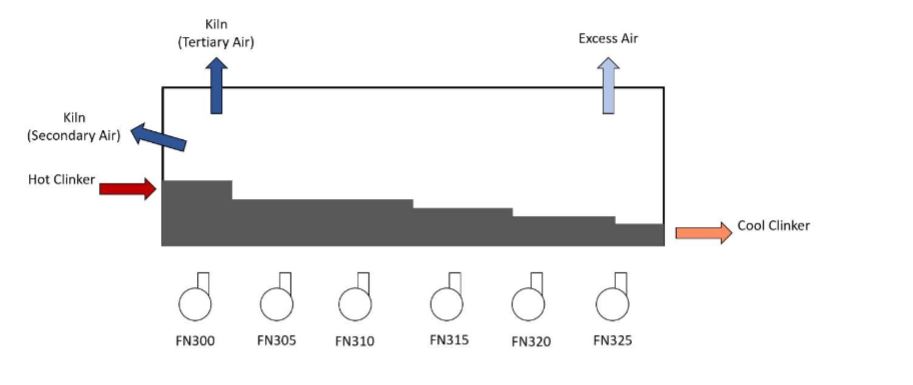
The model simulates the thermal exchange that takes place in the equipment. The cooler is treated as a cross heat exchanger, whose main phenomenon is the heat exchange by convection between the material bed and cooling air.
One of the main factors controlling the thermal exchange between bed and air is the void fraction – estimated by the fluidization regime of the clinker bed. After discretizing the bed, the model outputs are obtained by solving the energy and mass conservation equations in each volume.
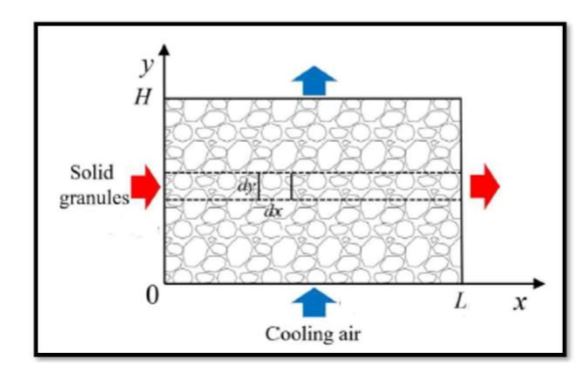
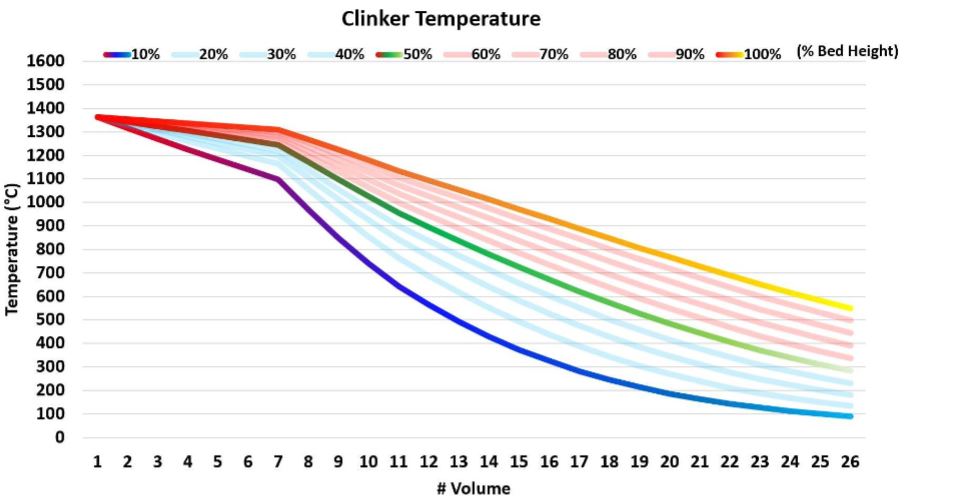
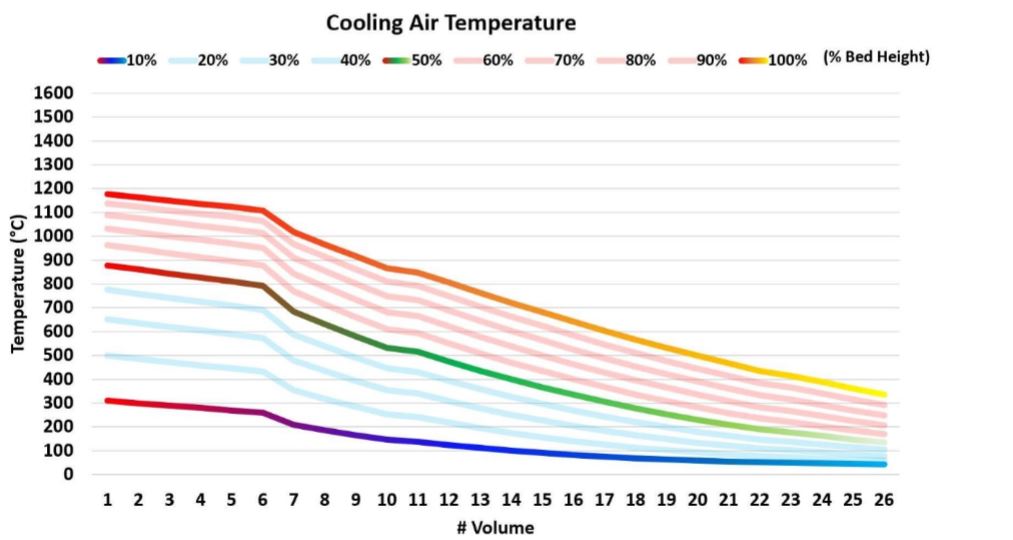
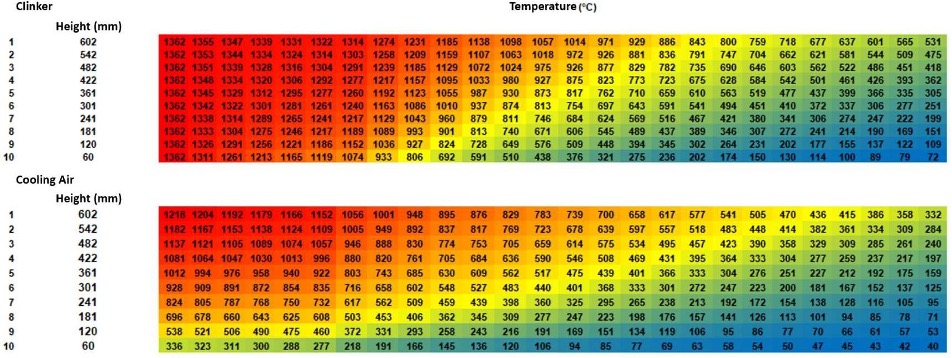
The grate cooler model is the most used by Dynamis, but it is not the only one, and Dynamis also studies satellite or rotary type coolers.
Part 6 – Equipment: the base case and all the proposed alternatives must be checked with the performance characteristics of the current equipment. DYNAMIS uses the operating curves of fans, blowers, pumps etc. to check the coherence of the solutions proposed.

Find out what exactly is happening in your process and study your rotary kiln and auxiliary systems with our D-RK Simulator and other Dynamis software, whether for a study of bottlenecks, increased production or an improvement in the quality of your product.
Team Dynamis

